Mid-December 2017 (11th-20th)
/On par with the mid-December 2016 period in terms of excitement, winter rarities, unseasonal occurrences & late first-of-season arrivals abounded over the last 10 days! Top birds during this period in Virginia Beach included ICELAND GULL (KUMLIEN’S), LECONTE’S SPARROW, BLACK-LEGGED KITTIWAKE & CACKLING GOOSE, late reports for Blue-winged Teal (12 Dec), Short-billed Dowitcher (12 Dec), Northern Parula (16 Dec), Whimbrel (17 Dec) & Yellow-throated Warbler (11-20 Dec) and first-of-season arrivals for Savannah Sparrow (Ipswich) (16 Dec) & Common Goldeneye (20 Dec).
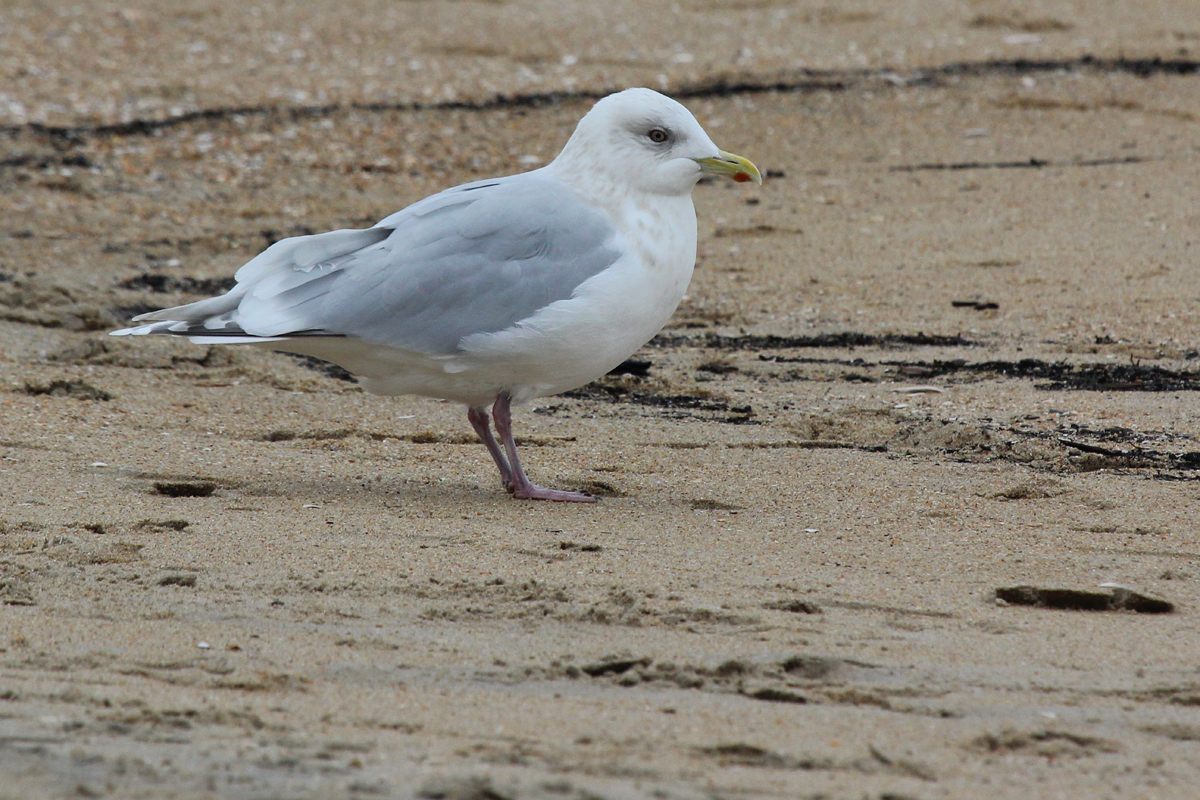
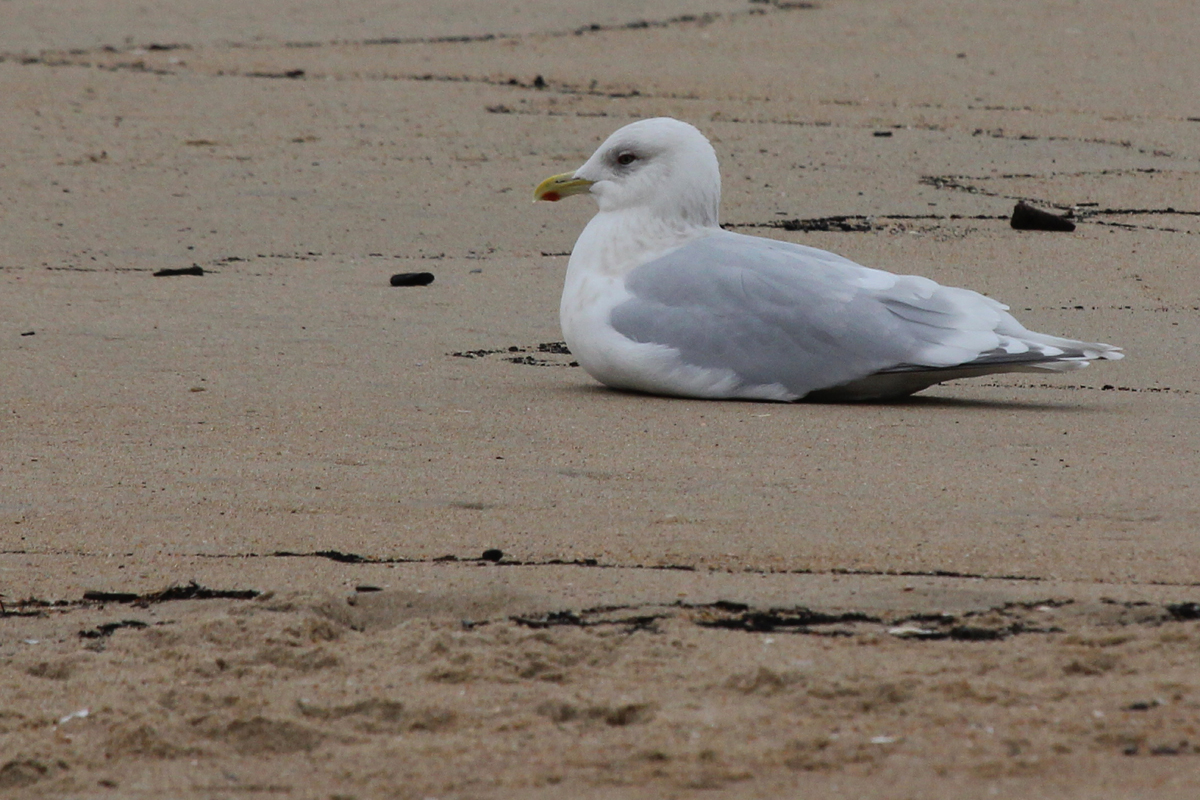

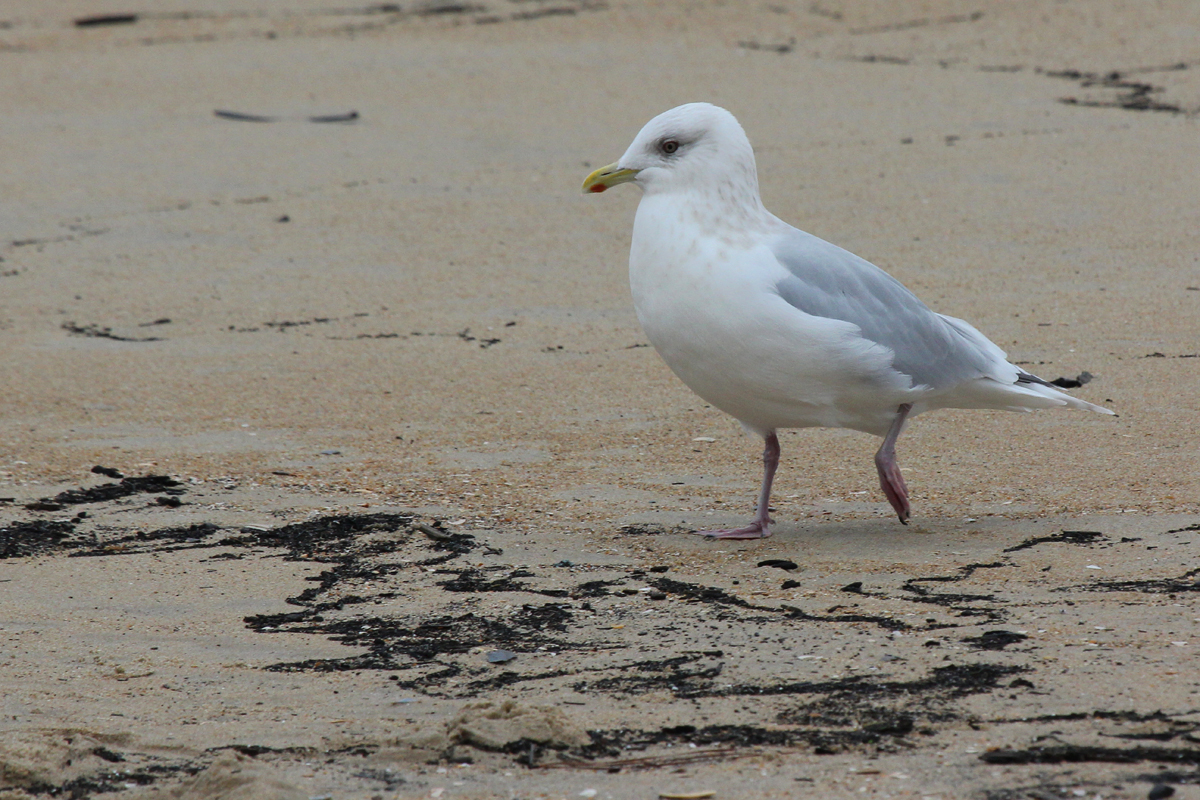



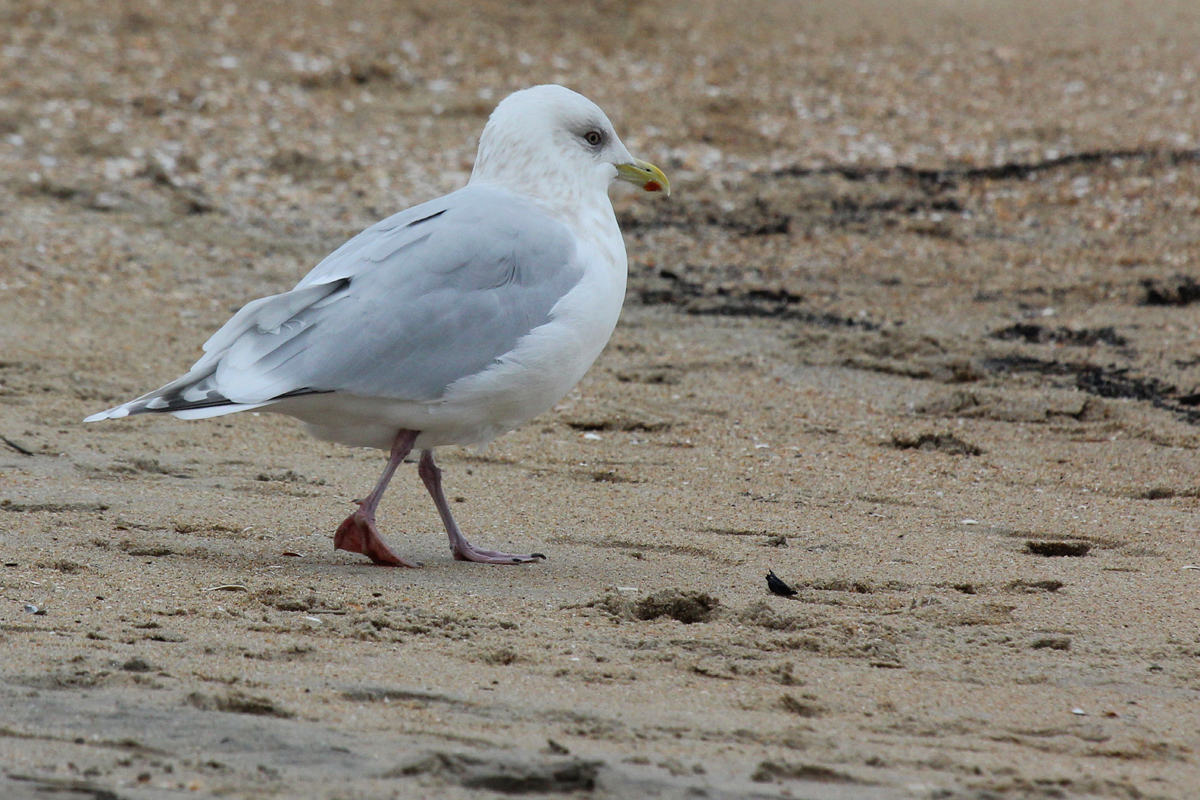
OBSERVATIONS: First and foremost, Virginia Beach finally tallied one of the ‘white-winged gull’ species for the latter half of 2017 when an adult ICELAND GULL (KUMLIEN’S) was found on the beach near Neptune Park / 31st Street at the Oceanfront / resort area (ph. Andrew Baldelli). At least one Iceland Gull was observed during the early parts of the year around the Chesapeake Bay Bridge-Tunnel, but this was a younger bird, not showing the brilliant plumage of this new-found adult. The adult was seen and extensively photographed (and video recorded) later in the morning on the beach between 39th & 40th Streets (ph. Karen & Tom Beatty / Rob Bielawski / Mike Collins). For birders hoping to catch a glimpse of this lovely species, it might be necessary to scan through a great many gulls anywhere between Rudee Inlet and the north end of the boardwalk. These flocks congregate at different areas of the beach at seemingly random intervals, but 6th Street is another important location to check, especially when the Rudee Inlet dredge pipe is operating and spilling out sand, water, and potential food for the gulls as a result. Back in July, the American Ornithological Society (formerly, the American Ornithologists’ Union), decided to lump the previously independent species Thayer’s Gull, as a subspecies of Iceland Gull. This move opened up our coastline to receiving two subspecies which is why I noted specifically that this individual was of the Kumlien’s race. According to the Gold Book (and more recent eBird data), the nominate race of Iceland Gull (glaucoides), has not yet been recorded in Virginia, but should of course be watched for since records exists to our north. Interestingly, at the time of the Gold Book’s publication (2007), there had never been a record of an adult Kumlien’s Gull in the state, but since then there have been quite a few records, scattered mostly along the coast.
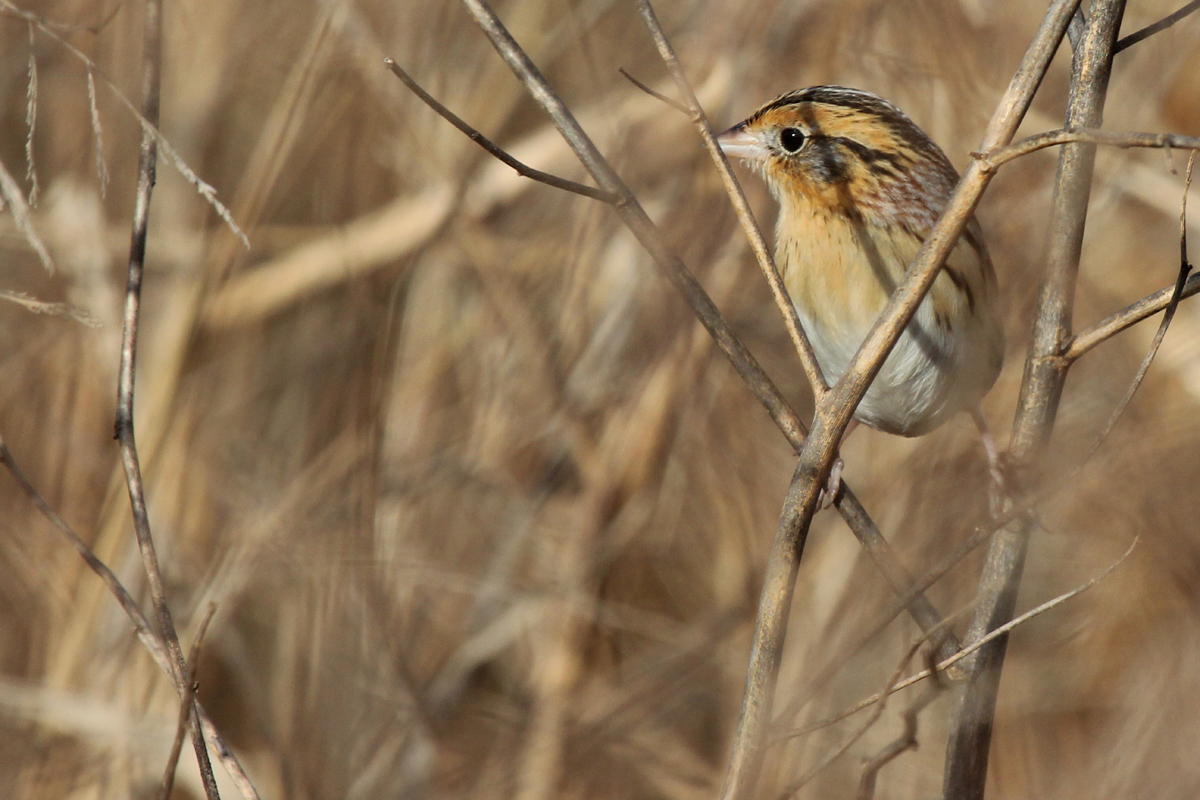
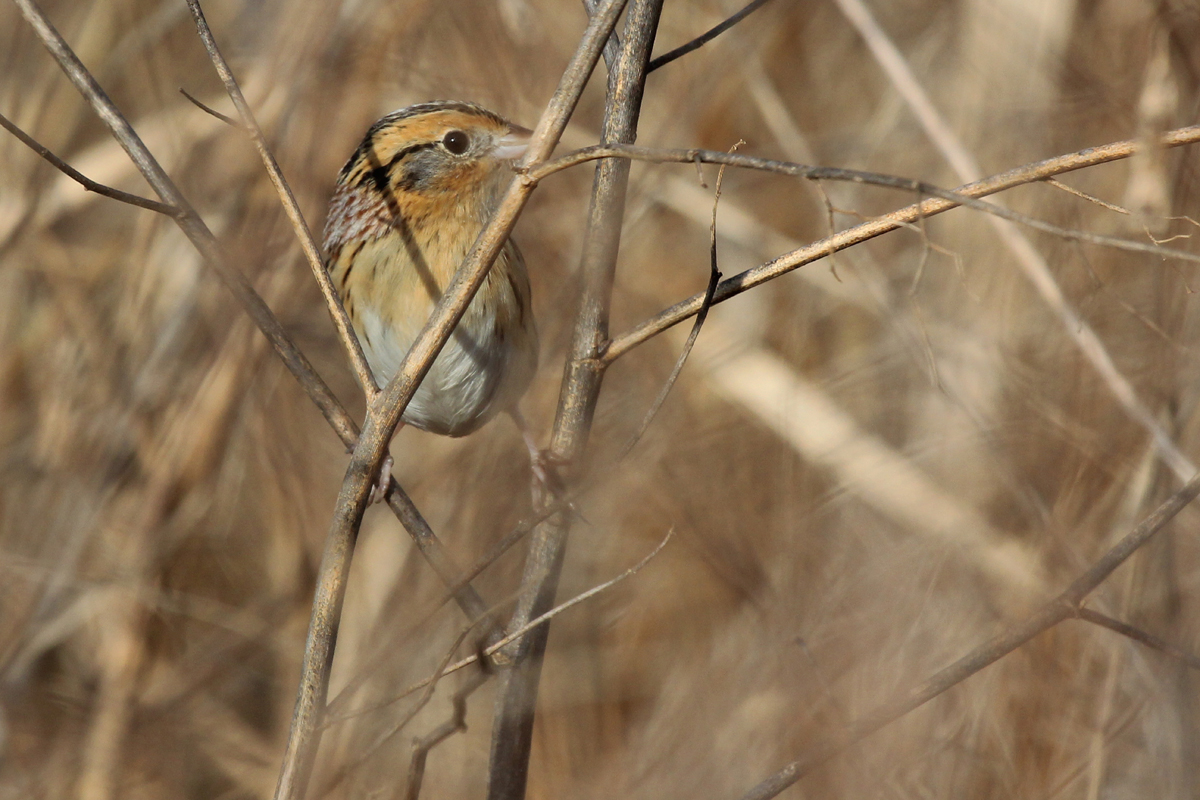


Several rarities continued from early periods into mid-December, one such bird being the LECONTE’S SPARROW that has likely taken up winter residency in the Beasley Tract of Princess Anne WMA. This bird was first found 3 Dec (ph. Andrew Baldelli & Rob Bielawski), and due to restrictions on access to the WMA which is open only on Sundays to birders who also possess a Virginia Department of Game & Inland Fisheries WMA access permit, it was not observed again until 10 Dec (obs. Tommy Maloney & Jason Schatti). The only Sunday occurring during the current period was 17 Dec, and for a third weekend in a row, it was observed in the same general area (ph. Rob Bielawski / Lisa Rose / Jason Strickland). So long as the habitat in the Beasley Tract stays the same, we might be likely to see at least one of these in the area each winter, as one (maybe the same individual?) spent the 2016-17 winter in the park as well. With the next available Sunday being Christmas Eve, it will be interesting to see if anyone makes the attempt, or re-finds this bird for the last time in 2017.
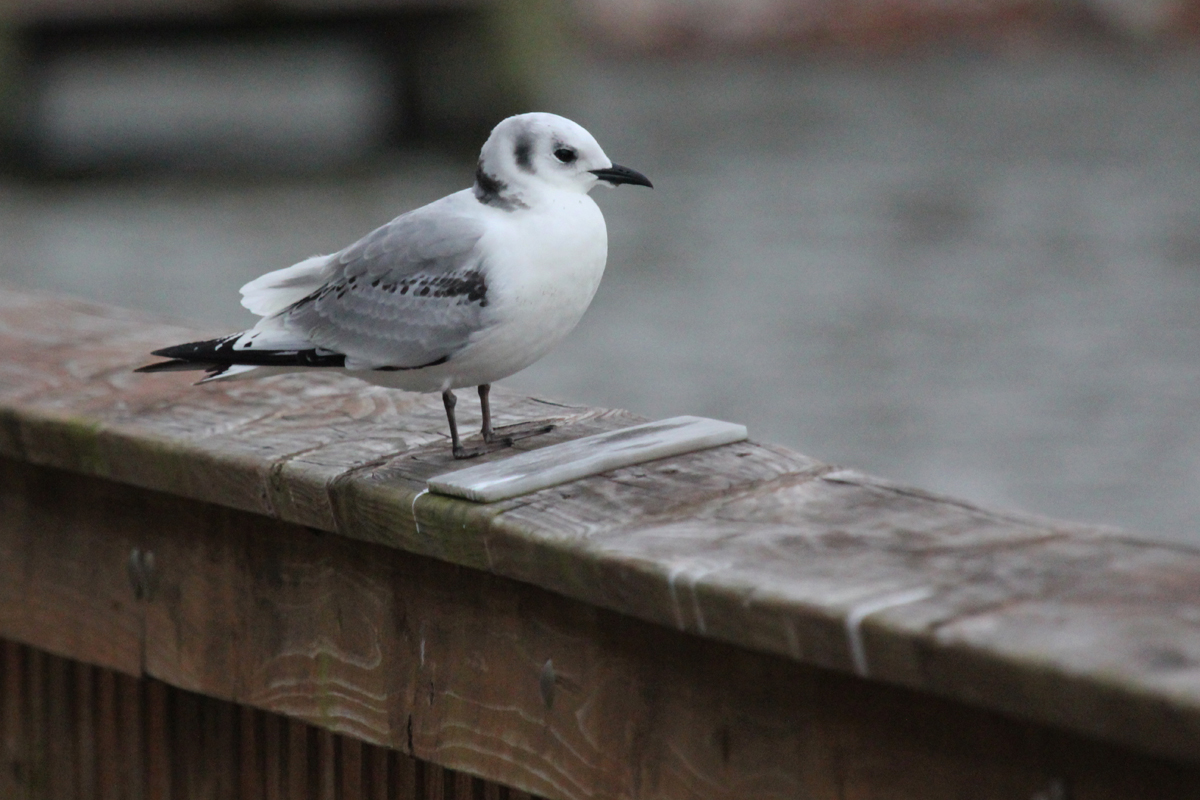
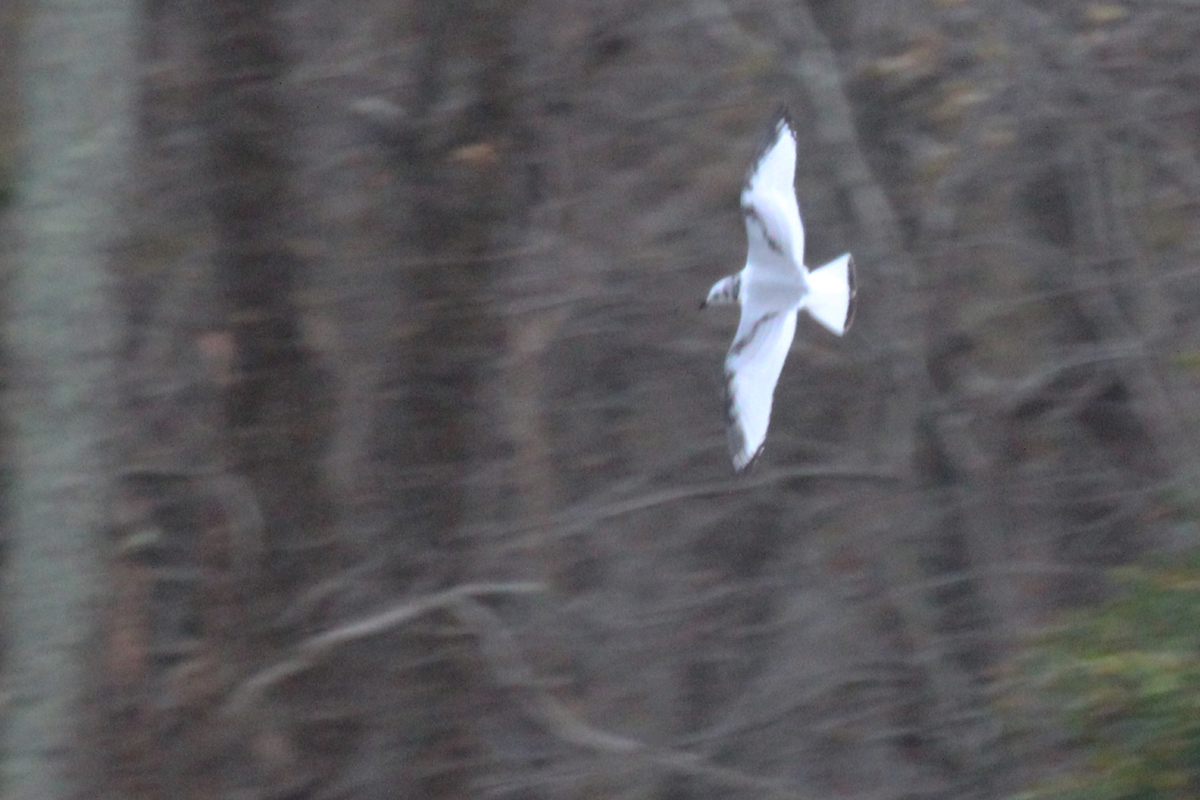

In addition to the LeConte’s Sparrow, the BLACK-LEGGED KITTIWAKE first observed 4 Dec at the Stumpy Lake Pier near Elbow Road’s junction with Indian River Road (ph. Jonathan Snyder) continued through mid-December, though was not recorded 11-13 Dec. So far, 44 eBird reports of this individual have been logged, and aside from the dates listed above, the only other day it hasn’t been reported was 20 Dec (seen again 21 Dec though, more on that next period). The last record for mid-December however, was submitted 19 Dec (ph. Marie & Ron Furnish) who observed the bird at its typical perch on the pier, as well as floating on the lake’s surface nearby. It is still unclear why this normally offshore species decided to take up residence along this inland body of freshwater, but it has been observed by many birders in flight, and even feeding on fish successfully captured from the lake. Being an immature bird, it shows the brilliant black M-pattern on the topside of the wings when in flight, and shows the black neck strap as well (when perched also). These field marks (along with its namesake black legs) help differentiate it from other Larids, with Bonaparte’s Gull being a species that could be confused for it due to the similar silhouette and black ear patch during the winter season. Just something to consider if looking at this bird, or any other gulls that might actually be Kittiwakes.
A fourth and final rarity observed this period was a CACKLING GOOSE observed in the field between Ocean Lakes High School & the HRSD Atlantic wastewater treatment plant off Firefall Drive (obs. Karen & Tom Beatty). This individual is likely the same one observed on Sherwood Lakes 26 Nov (obs. David Clark). The goose flock that rests on the lake is often seen foraging in the fields to the east and south, as well as on those off Firefall Drive (sometimes also resting on ponds in the Ocean Lakes neighborhood). It is possible that there is more than one Cackling Goose mixed in with this wintering flock, but so far only one has been reported at a time to eBird. This Cackling Goose will show a much smaller size than the Canadas (roughly the size of a Mallard), though size isn’t always obvious when viewing at a distance in fields; it is much more obvious on the water. Also, the bill is extremely short, and very different proportionally in terms of length to base height in comparison to the longer Canada’s bill. The body tends to be a silvery color instead of the deeper brown of the Canadas, and sometimes a white ring can be seen around the bottom of the neck but this isn’t always obvious. Best advice for finding one is to spend a lot of time scoping the Canada Goose flock as it rests on Sherwood Lakes. Interesting, none of the other rarer geese species (Ross’s, Greater White-fronted) were observed this period, whereas last year at this time, each caused quite a stir.
While not full-fledged rarities, we also had some seasonally unexpected occurrences this period which included Blue-winged Teal, Short-billed Dowitcher, Whimbrel, Northern Parula & Yellow-throated Warbler! By ‘seasonally unexpected’, I mean that each of these species is not annually present in Virginia Beach during the winter months. So there may be records of some in past winters, they aren’t generally expected to be reported, thus making any reports during Dec-Feb interesting! For starters, a pair of Blue-winged Teal were observed 12 Dec (obs. Karen & Tom Beatty) on Horn Point Road of Back Bay’s western shoreline. Typically, the Virginia / North Carolina border is a fitting northern limit for wintering Blue-winged Teal, showing up at Mackay Island often from Dec-Feb, but not often being reported north of there until late February when the first migrants start appearing. Occasionally, a few will winter at Back Bay NWR in the impoundments, but this area is closed to the public throughout the winter season, so they can’t be observed except for on official park surveys.
A group of 20+ dowitchers, most verifiably documented as Short-billed Dowitchers, was also observed 12 Dec along Munden Road (ph. Karen & Tom Beatty). The last winter record in Virginia Beach according to eBird data was of 11 at Back Bay NWR in January 2012 (obs. Robert Ake), making their occurrence this December all the more interesting. This species winters annually on the Eastern Shore to our north, and also along the Outer Banks to our south, but ideal habitat is not abundant in Virginia Beach by any means. Favoring mudflats and impoundments with shallow water, there just aren’t many locations that suit their needs, and even less that are publicly accessible and would allow for actual observations of the species if they are present. Fortunately, with recent flooding of impoundments at the Whitehurst Tract of Princess Anne WMA, perhaps we can expect to see more observations, and maybe this can lead to a Long-billed Dowitcher record?




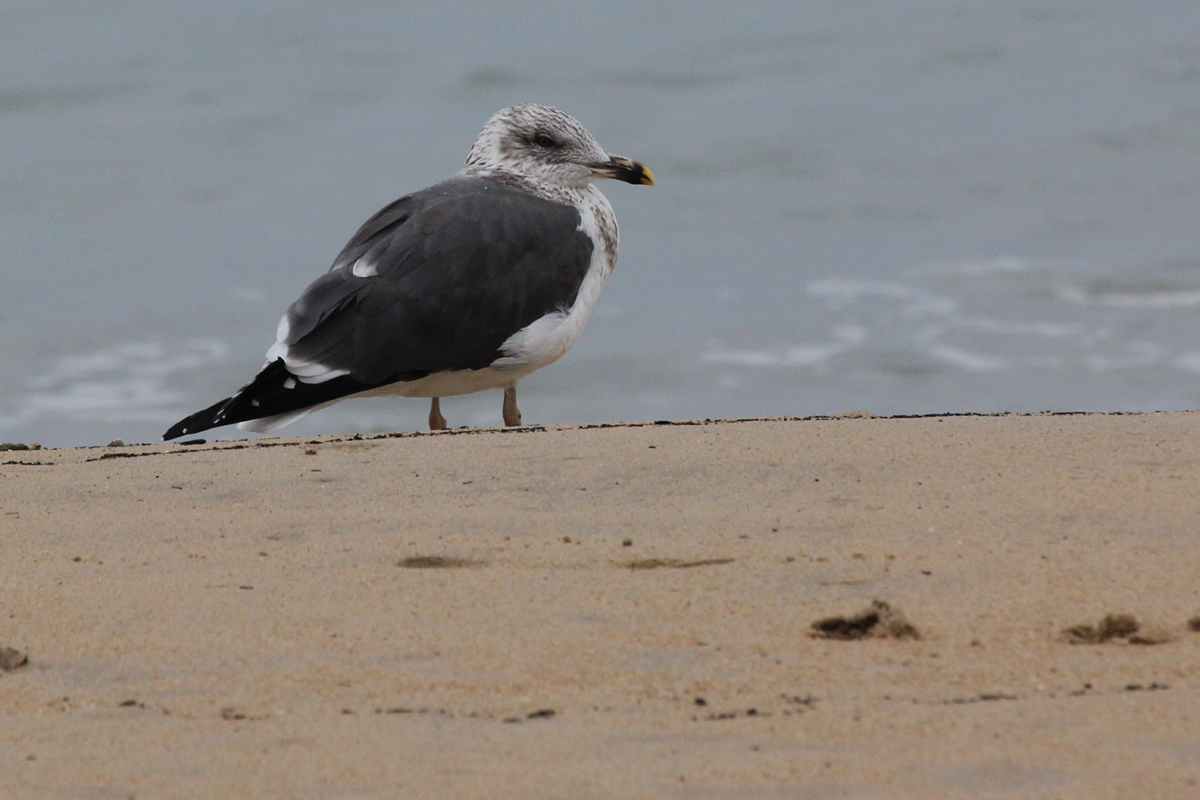
Another shorebird with scant records during winter in Virginia Beach was observed this period when a Whimbrel was reported 16 Dec at Rudee Inlet (obs. Tommy Maloney). This species winters in small numbers in extensive marshes & tidal flats of the barrier island lagoon system of the Eastern Shore, but like the dowitchers described in detail above, we seem to lack the right habitat to expect them to winter here. The last eBird report for this species in winter was all the way back in 1999 (a single individual), with the next-to-last record being in 1989 (a flock of 43)! It would be wonderful if another observation of this individual took place and a photograph could be secured to help document. Back Bay NWR’s impoundments would be my bet for one to turn up, but as mentioned, those are off limits to the public until April unfortunately. Maybe Princess Anne WMA’s Whitehurst Tract will provide one?
In a typical winter, there are five warbler species (Yellow-rumped, Palm, Pine, Orange-crowned & Common Yellowthroat) that spend the entire winter here in Virginia Beach, so reports of any other species are always noteworthy. Mirroring last year’s mid-December period, a Northern Parula was photographed 16 Dec at a private residence (ph. Carolyn Page). In combination with the individual photographed in Dec 2016 on Haviland Drive (ph. Rob Bielawski) this now makes a total of two winter records for the species in Virginia Beach per eBird. The Gold Book notes “about” 8 records in southeast Virginia, but doesn’t detail out the specific locations of each, though it is likely at least one, or more, of these records probably occurred in Virginia Beach. The 2017 individual has apparently continued to be seen at the same private residence after the initial sighting as well, so there may be more eBird reports to mention next period for this species.
Continuing the topic of wintering warblers from above, a Yellow-throated Warbler has also been visiting a feeder at a private residence in the central part of Virginia Beach (ph. Maggee Smith). Though reports have not yet been submitted to eBird, this individual first appeared on 5 Dec and has been seen most days since. This same property also hosted a Yellow-throated Warbler throughout the winter of 2016-17, so it seems highly plausible that this might be the same individual returning for a second winter! As soon as eBird reports with photographs are added, they’ll get linked into this report. This species has prior eBird records in late 2005, and in early 2016 also at private residences.
Amazingly, and in addition to all the great rarities and late occurrences, we also had two first-of-season occurrences during mid-December! Observed on 16 Dec on the Chesapeake Bay beach of First Landing SP (obs. Andrew Baldelli), our first Ipswich Sparrow was finally logged. The Ipswich is a field-identifiable subspecies / race of Savannah Sparrow that winters along the Atlantic Coast and breeds almost exclusively on Sable Island off Nova Scotia, Canada. Interestingly, a second report followed not long after, with one sighted at Pleasure House Point NA to close out the period on 20 Dec (obs. Tommy Maloney. Currently, researchers from Dalhousie & Acadia Universities in eastern Canada are performing an intensive study of Ipswich Sparrows. The project, aptly titled The Ispwich Sparrow Project, has banded 263 sparrows with color coding combinations that can be reported to their website: http://leonardlab.biology.dal.ca/ipswich/help.html. Something to keep in mind if you happen to come upon individuals of this very brightly plumaged subspecies on our coastline this winter!
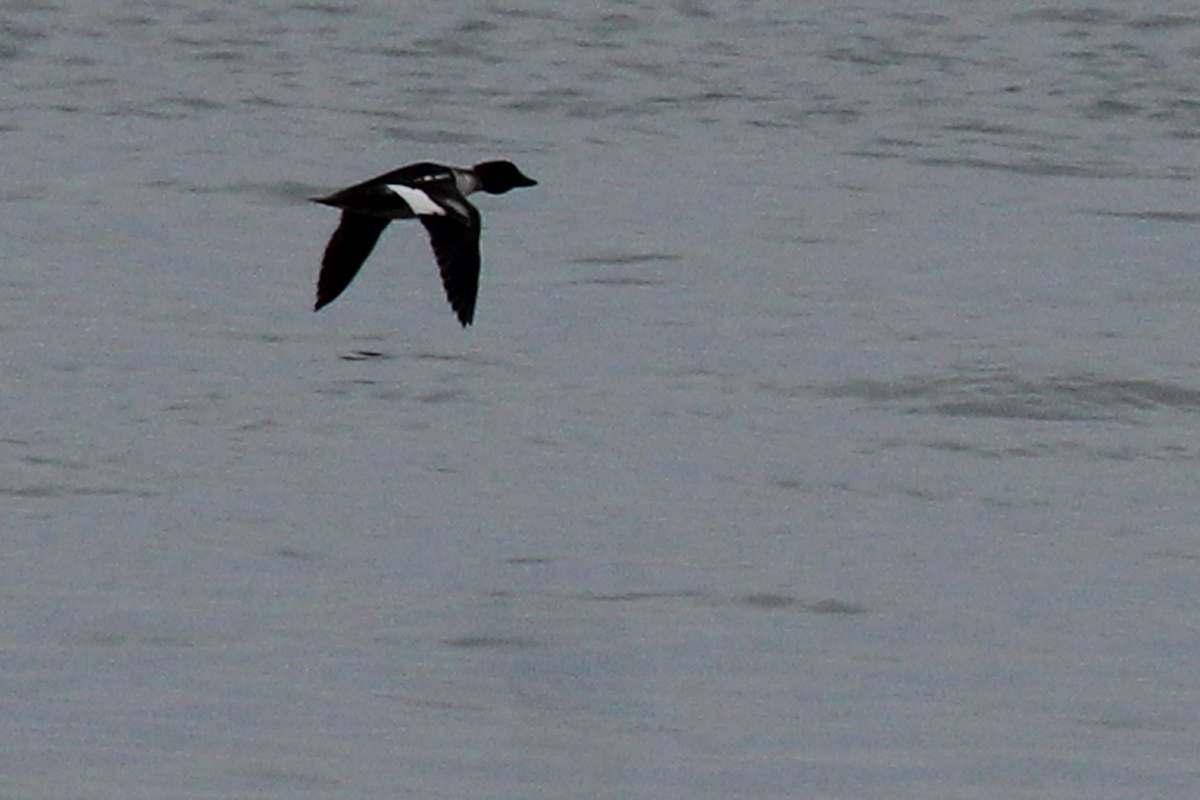
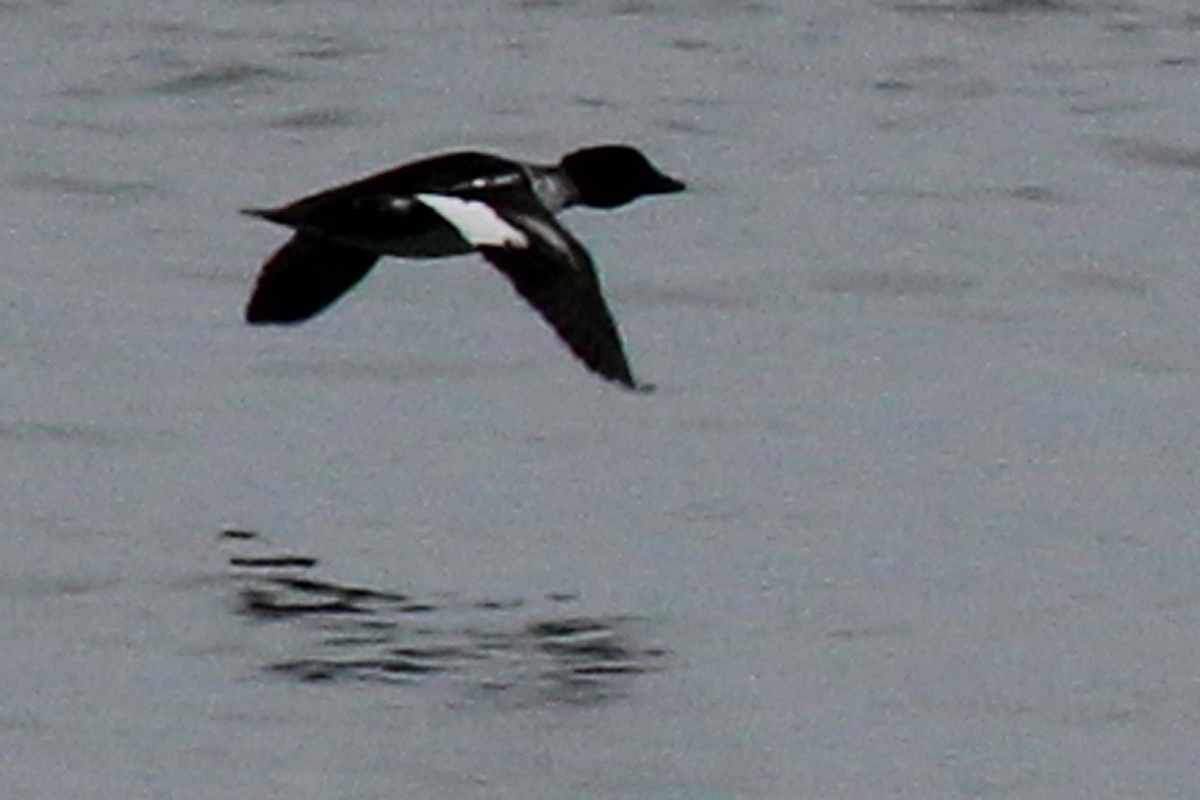
In addition to the Ipswich Sparrows, a final first-of-season arrival occurred on 20 Dec when a single Common Goldeneye was observed in rapid, southbound flight just offshore of the beach at 39th Street (ph. Rob Bielawski & Mike Collins). With only a few individuals reported each winter in Virginia Beach, it should be noted that this is only the 4th record for the city as a whole in 2017, with records only of individuals at Back Bay NWR, First Landing SP (ph. Kathy Spencer) and on the Virginia Beach side of Little Creek Inlet having occurring during the early part of 2017. Hopefully, this is just the first of more to arrive, but as mentioned, it has been a tough species to find over the last few winters, and with the Chesapeake Bay Bridge-Tunnel’s first island now being closed to the public, it makes it even more difficult.
We had quite a few other interesting reports around the city this period, and while they might not bear the same ‘noteworthiness’ as some of the above sightings, they no doubt should still be mentioned. Miraculously, a Virginia Rail was found disoriented after a building strike along Pacific Avenue on 13 Dec (ph. Keith Roberts) but is apparently scheduled to be released back after checking out medically. Ruby-throated Hummingbirds are still being observed around the city with the weather not yet reaching critically cold levels for this species. Most recently, two were observed on 14 Dec at Camp Pendleton SMR (ph. Karen & Tom Beatty). Coastal winter specialties including Common Eiders were noted at several locations during the period, with an adult male photographed at First Landing SP on 16 Dec (ph. Andrew Baldelli) and first-year males observed at the same site on 20 Dec as well as at the Virginia Beach Fishing Pier on 14 Dec (ph. Karen & Tom Beatty and perhaps the same individual off the Oceanfront on 20 Dec (obs. Mary Catherine Miguez). Baltimore Orioles continue to pop up in residential yards as has become commonplace over recent winters. As many as 5 have been observed so far with quite a few beautiful photographed listed further down in this report. Nelson’s Sparrows persist at Pleasure House Point NA, most recently sighted on 16 Dec (obs. Bob Swiader), and Cattle Egrets and Laughing Gulls are still lingering in small numbers in the right habitat.
WEATHER: Average daily high temperatures dropped very slightly, 0.2° from 52.8° F in mid-December to 52.6° (-1.2° from prior 10-year average), with average daily low temperatures dropping a bit more sharply, 5.4° from 37.6° to 32.2° F (-4.8° from prior 10-year average). Overall, temperatures ranged from a minimum of 23° F (our coldest day of the season thus far, on 13 Dec) to a maximum of 62° (19 Dec). For the first time in a long time, no precipitation was measured this period, however, some minor snow flakes did fall on 12 Dec (a Tuesday). Maximum sustained winds at Oceana this period were 31 mph and gusts reached 44 mph (12 Dec) as a strong front passed over the region. Sunrise/sunsets varied from 7:06 AM/4:48 PM (11 Dec) to 7:12 AM/4:51 PM (20 Dec), which means over all we lost 9 minutes of daylight during this period. Preliminary tide levels (referenced to MLLW) at the Sewell’s Point gauge (NOAA) in Norfolk varied from a minimum of -0.961 (12:12 & 13:24-30 AM, 14 Dec) to a maximum of 2.838 (4:54-5:00 AM, 13 Dec).
SPECIES DOCUMENTED BY MEDIA and submitted to eBird for Virginia Beach during this period included: 11 DEC – Gadwall, Mallard, Double-crested Cormorant, Great Egret, Ring-billed Gull, Red-bellied Woodpecker, Downy Woodpecker, Carolina Chickadee & Yellow-rumped Warbler (Stumpy Lake NA / Jonathan Snyder); Great Egret (Stumpy Lake Pier / Wendy Ealding); Hermit Thrush (Glenmore Hunt Tr. / Karen & Tom Beatty); Wood Duck (King Grant Lakes / Rob Bielawski). 12 DEC – Hermit Thrush [v.r.] (Glenmore Hunt Tr. / Karen & Tom Beatty); Ring-necked Duck, Red-breasted Merganser, Red-tailed Hawk & Belted Kingfisher (Sherwood Lakes / Karen & Tom Beatty); Northern Shoveler, Gadwall & American Wigeon (Bayville Farms Park / Kathy Spencer); Eastern Bluebird & Swamp Sparrow (Horn Point Rd. / Karen & Tom Beatty); Northern Harrier, Dunlin & Short-billed Dowitcher (Munden Rd. / Karen & Tom Beatty); Black-crowned Night-Heron (Lake Smith / Tracy Tate). 13 DEC – Gadwall, Great Blue Heron & Ruby-crowned Kinglet (Stumpy Lake NA / Jonathan Snyder); Mourning Dove, Carolina Chickadee, Carolina Wren, Ruby-crowned Kinglet, Pine Warbler, Yellow-rumped Warbler, Chipping Sparrow, Northern Cardinal & Baltimore Oriole (Glenmore Hunt Tr. / Karen & Tom Beatty); Virginia Rail (Pacific Ave. / Keith Roberts). 14 DEC – Yellow-bellied Sapsucker (Glenmore Hunt Tr. / Karen & Tom Beatty); Canada Goose, Hooded Merganser, Bald Eagle & Ruby-throated Hummingbird (Camp Pendleton SMR / Karen & Tom Beatty); Common Eider & Lesser Black-backed Gull (Virginia Beach Fishing Pier / Karen & Tom Beatty); Double-crested Cormorant, Great Blue Heron, Turkey Vulture, Cooper’s Hawk, BLACK-LEGGED KITTIWAKE & Ring-billed Gull (Stumpy Lake NA / Jonathan Snyder). 15 DEC – Northern Gannet, Sanderling, Laughing Gull, Ring-billed Gull, Lesser Black-backed Gull & Forster’s Tern (Rudee Inlet / Karen & Tom Beatty); BLACK-LEGGED KITTIWAKE (Stumpy Lake Pier / Rob Bielawski). 16 DEC – Common Eider (First Landing SP / Andrew Baldelli); American Bittern (First Landing SP / Anonymous); Northern Parula (Holland Rd. / Carolyn Page). 17 DEC – House Wren & Song Sparrow (Back Bay NWR / Rob Bielawski); LECONTE’S SPARROW (Princess Anne WMA Beasley Tract / Rob Bielawski); BLACK-LEGGED KITTIWAKE (Stumpy Lake Pier / Jason Strickland); BLACK-LEGGED KITTIWAKE (Stumpy Lake Pier / Rob Bielawski); BLACK-LEGGED KITTIWAKE (Stumpy Lake Pier / Julian Dymacek); Northern Shoveler, Mallard, Hooded Merganser, BLACK-LEGGED KITTIWAKE & Ring-billed Gull (Stumpy Lake NA / Jonathan Snyder); Sedge Wren (Princess Anne WMA Whitehurst Tract / Julian Dymacek). 18 DEC – Northern Shoveler, Red-tailed Hawk & BLACK-LEGGED KITTIWAKE (Stumpy Lake NA / Karen & Tom Beatty); Northern Shoveler, American Wigeon, Mallard, Northern Pintail & Ring-necked Duck (Kings Grant Lakes / Jonathan Snyder); Great Blue Heron & BLACK-LEGGED KITTIWAKE (Stumpy Lake Pier / Kathy Louthan); BLACK-LEGGED KITTIWAKE (Stumpy Lake Pier / Cindy Hamilton). 19 DEC – Gadwall, Pied-billed Grebe, Great Blue Heron, Great Egret, BLACK-LEGGED KITTIWAKE, Blue Jay, Brown Creeper & Carolina Wren (Stumpy Lake NA / Ron Furnish). 20 DEC – American Bittern (Pleasure House Point NA / Cindy Hamilton); Mourning Dove, Yellow-bellied Sapsucker, Downy Woodpecker, Blue Jay, Carolina Wren, Eastern Bluebird, American Robin, Pine Warbler, Chipping Sparrow, White-throated Sparrow, Northern Cardinal & Baltimore Oriole (Glenmore Hunt Tr. / Karen & Tom Beatty); ICELAND GULL (KUMLIEN’S) (31st Street Beach / Andrew Baldelli); ICELAND GULL (KUMLIEN’S) [v.r.] (39th Street Beach / Karen & Tom Beatty); Common Goldeneye & ICELAND GULL (KUMLIEN’S) (39th Street Beach / Rob Bielawski); Hooded Merganser & Red-winged Blackbird (Camp Pendleton SMR / Karen & Tom Beatty).
LOOKAHEAD: Late December is one of the most exciting periods for birding in Virginia Beach. The 21st is the Winter Solstice, marking the shortest day of the year, meaning very soon we will finally start gaining birding time! Additionally, both of the local Christmas Bird Counts (CBCs) take place during this period, with the Back Bay CBC occurring 29 Dec (a Friday) and the Little Creek CBC taking place on New Year’s Eve (a Sunday). Enthusiastic birders are working overtime at ‘closing out’ their remaining available species for year lists, and this often draws observers from all over the state to our region of the coast! Continue picking apart flocks of blackbirds for anything out of place (Yellow-headed Blackbird especially), goose flocks for rarer species (Cackling, Ross’s, Greater White-fronted) and seawatching for southbound waterfowl like eiders, scoters, and many other species. Any scrubby habitat could hold interesting sparrows, and any mixed woodland flocks of chickadees, titmice and kinglets are worth scrutinizing for vagrant (Townsends or Black-throated Gray) or over-wintering warblers! Lastly, regularly occurring (used synonymous with annually-occurring here) species that have not been observed yet this fall include Redhead (15 Oct), Harlequin Duck (25 Oct), and Canvasback (10 Nov). As always, make sure to report your finds to eBird so the data can be used to adjust the expected arrival dates and to view the full listing of each species’ “average expected arrival dates”!
Next Entry | Entry Index | Previous Entry | Same Period Last Year
For further information regarding this thrice-monthly, online publication, please visit the Journal Overview Page which provides an in-depth explanation of the format, layout and composition of the journal. As always, thank you for reading, and please leave me a comment below (you may use your Facebook, Gmail or other accounts to easily do so), or just click the Heart icon to the lower right of this post to let me know you stopped in!